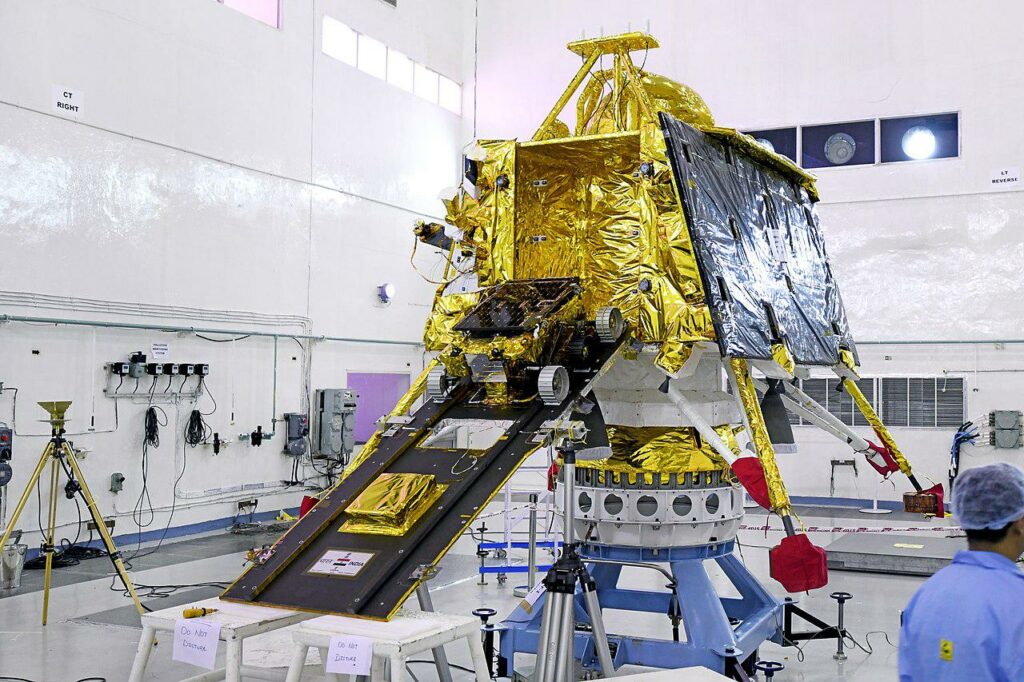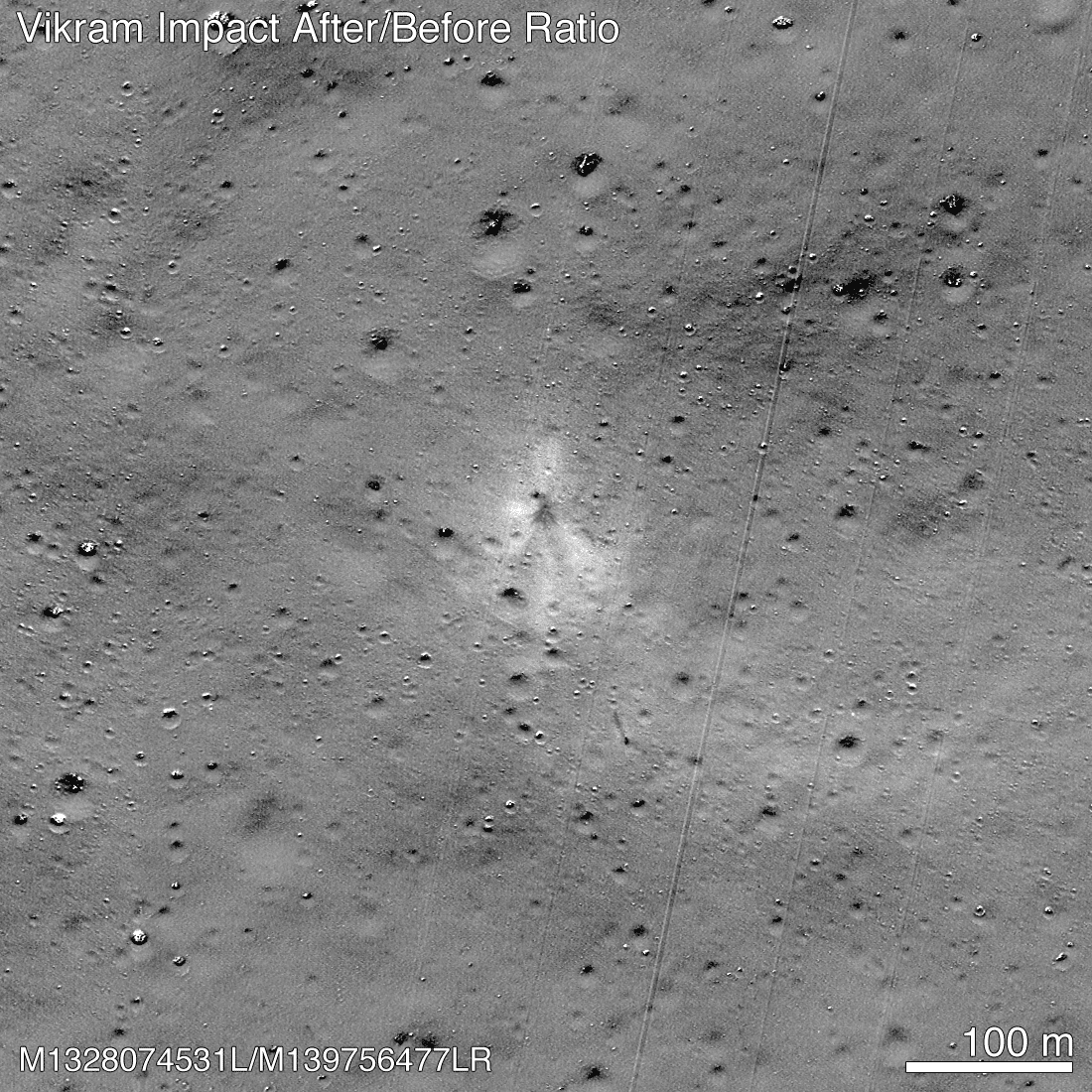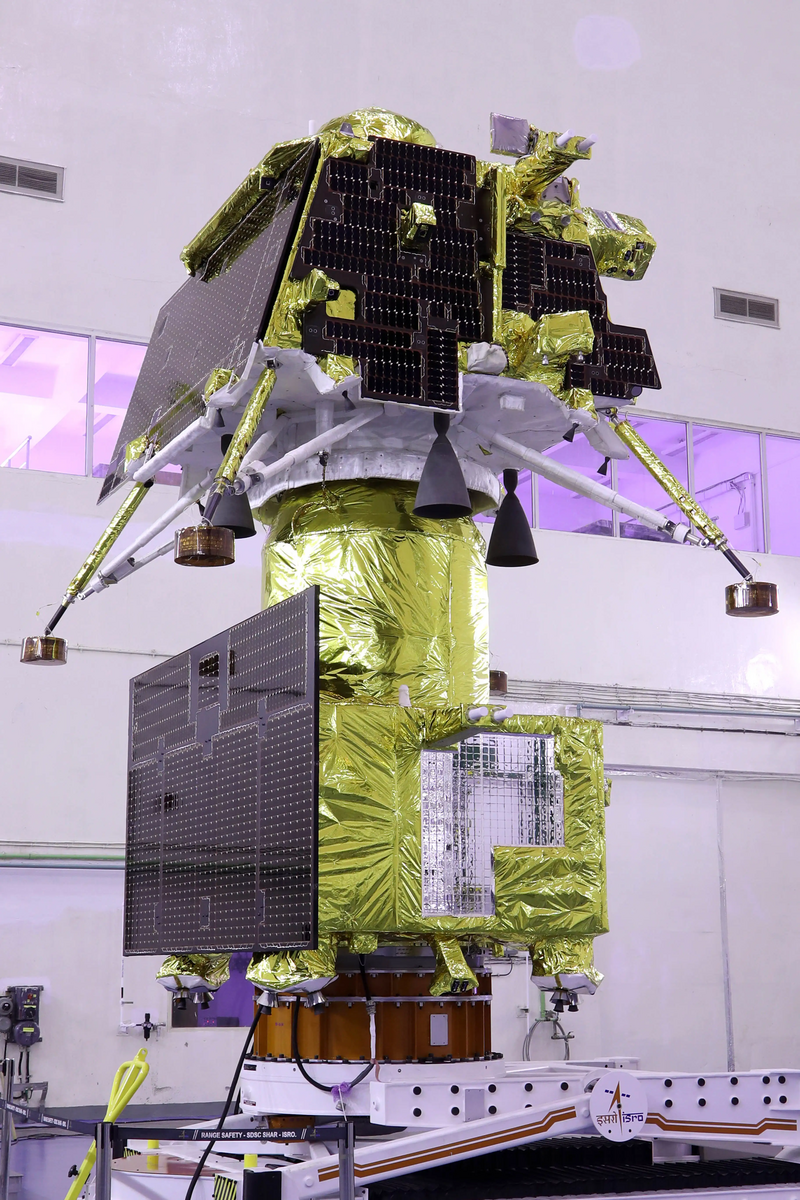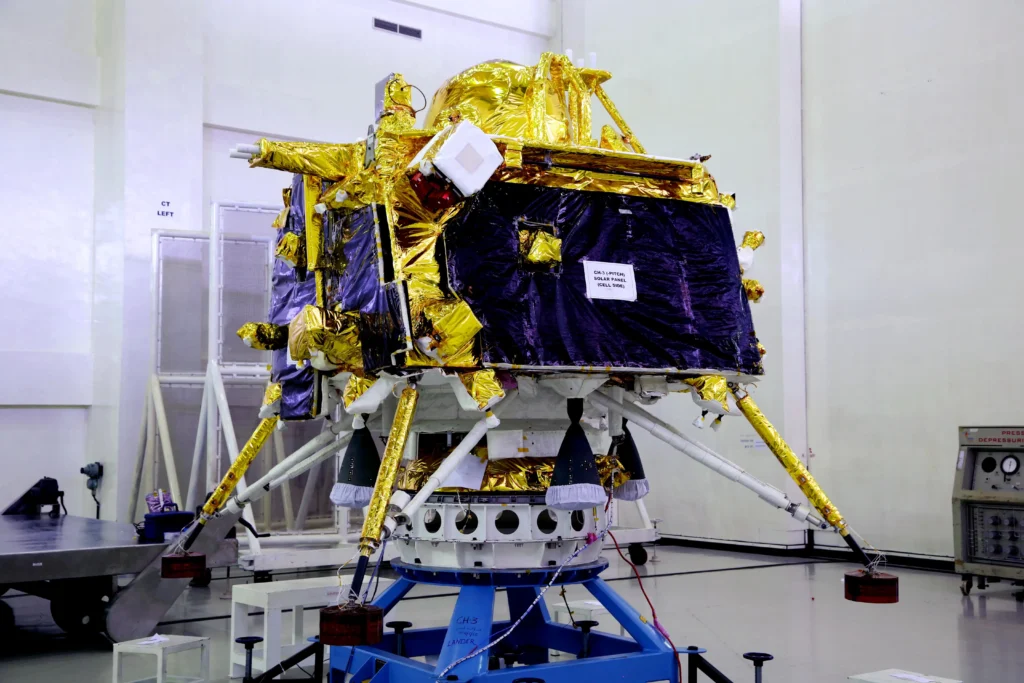On July 14, an LVM3 M4 rocket will be launched from the territory of the Satish Dhawan Space Center. It will send Chandrayaan-3 to the Moon, India’s main space mission of recent years.
Failure of the first Indian lunar rover
In 2019, the Indian Space Research Organization (ISRO) sent the Chandrayaan-2 mission to the Moon. It consisted of an orbital module and a Vikram descent platform, on board of which was the first Indian lunar rover Pragyan.

After entering the selenocentric orbit, Vikram separated from the orbital module, after which it began landing on the Moon. Initially, the descent took place in normal mode, but shortly before landing, communication with the spacecraft was lost. Later, the LRO probe photographed the crater formed as a result of the fall of the platform. Subsequent investigation established that the cause of the accident was a software glitch that led to the premature shutdown of the landing engine.

Despite the fact that the Chandrayaan-2 orbital module successfully completed all its tasks (it is still working), the unsuccessful landing on the Moon was a noticeable blow to the reputation of ISRO. Not surprisingly, just two months after the accident, the organization announced its intention to launch another lunar mission. It was named Chandrayaan-3.
Initially, it was assumed that Chandrayaan-3 would be built as soon as possible and ready by the end of 2020. But the combination of the consequences of the COVID-19 pandemic and various technical problems has led to the fact that the launch date has been shifted by as much as three years.
Configuration of the Chandrayaan-3
Chandrayaan-3 consists of a flight module and a descent platform with a lunar rover. The mass of the flight module is 2148 kg. It will have to put Chandrayaan-3 into orbit around the Moon.

After separation of the descent platform, the flight module will remain in orbit and will be used as a data repeater. In addition, it is equipped with the SHAPE scientific tool. The spacecraft will measure the spectral and polarimetric characteristics of the Earth. This data will be useful to scientists studying Earth-like exoplanets.
The mass of the descent platform is 1752 kg (taking into account the 26-kilogram rover). It will attempt to land on the territory of the southern polar region of the Moon. If successful, India will become the fourth country in history to have managed this operation.

The Chandrayaan-3 descent platform is equipped with scientific instruments designed to study the thermal characteristics of the lunar regolith, the properties of near-surface plasma and seismic activity. There is also a corner reflector on board the platform.
As for the rover, it is equipped with instruments designed to conduct research on the mineralogical composition of the lunar surface. Both the lunar rover and the platform are designed to work for one lunar day (14 Earth days). But in theory, they can work out more. According to ISRO experts, their tests have shown that the platform and the lunar rover are able to survive the lunar night. If they manage to recharge their batteries and get in touch with Earth, their mission will be extended.
Live broadcast of the launch of Chandrayaan-3
The launch of Chandrayaan-3 will take place on July 14 at 12:05 p.m. GMT+3. The event will be broadcast live on the ISRO website and on Youtube.
Initially, the spacecraft will be launched into a transition orbit with a perigee of 170 km and an apogee of 36,500 km. After that, it will perform a series of maneuvers that will transfer it to a 100-kilometer selenocentric orbit. Next, the descent platform will separate from the flight module and begin the descent. At the moment, its landing is scheduled for August 23.
Follow us on Twitter to get the most interesting space news in time
https://twitter.com/ust_magazine
